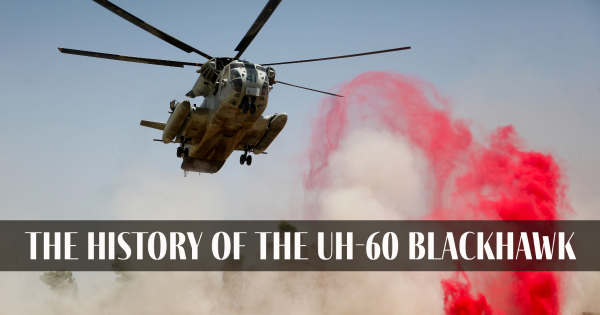Navigating Uh 60 Helicopter Regulations and Compliance Requirements

Regulatory Structure Introduction
The regulative framework governing UH-60 helicopter procedures incorporates a complicated set of guidelines and standards established by aeronautics authorities. These laws are created to make sure the reliable and risk-free operation of UH-60 helicopters in numerous settings. The Federal Air Travel Administration (FAA) plays a main duty in establishing and enforcing these laws, which cover a variety of functional elements, consisting of airworthiness requirements, pilot qualifications, upkeep needs, and functional procedures.
Conformity with these guidelines is important for helicopter drivers to preserve the highest possible levels of safety and operational honesty. Failure to abide by these guidelines can result in serious effects, including crashes, injuries, and regulative assents. As a result, helicopter drivers need to remain educated regarding the most recent regulative developments and make sure that their procedures are in complete compliance with all appropriate regulations and criteria.
Airworthiness Inspections and regulations
Amidst the regulative framework regulating UH-60 helicopter operations, an important emphasis pushes conformity with Airworthiness Directives and performing thorough inspections to support security standards and operational reliability. Airworthiness Instructions (ADs) are released by aeronautics authorities to resolve hazardous problems in airplane, consisting of the UH-60 helicopter, and mandate particular activities to be taken by owners or operators. Conformity with Advertisements is required, and failing to stick to these regulations can lead to serious effects, consisting of grounding of the aircraft.
Regular inspections are paramount to ensuring the airworthiness of UH-60 helicopters. These examinations incorporate a series of checks, from routine day-to-day examinations performed by pilots prior to and after flights to more thorough arranged maintenance examinations executed by accredited mechanics. In addition, special examinations might be required based upon particular conditions or incidents. By adhering to a rigorous evaluation regimen, drivers can spot and deal with potential problems promptly, therefore improving the safety and security and dependability of UH-60 helicopter procedures.
Pilot Certifications and Training

Pilot training for UH-60 helicopters is extensive and covers a vast variety of topics, consisting of aircraft systems, emergency situation procedures, navigating, and mission-specific training. Furthermore, pilots undergo simulator training to practice numerous emergency circumstances in a controlled setting. This training helps pilots create the required abilities to deal with tough situations successfully.


Moreover, continuous training and expert development are important for UH-60 pilots to stay existing with the most recent policies, technology, and ideal techniques. By buying pilot certifications and training, operators can boost security, enhance performance, and make certain conformity with regulative demands in the operation of UH-60 helicopters.
Operational Limitations and Needs
Pilot certifications and training serve as the structure for recognizing the operational constraints and needs related to UH-60 helicopter procedures (uh 60). These functional restrictions are established to make certain the security of the crew, guests, and you can try this out the aircraft itself. Functional restrictions might consist of factors such as weather, weight constraints, altitude constraints, and operational boundaries. It is crucial for pilots to be fluent in these restrictions to make educated choices throughout flight operations. Additionally, conformity requirements, such as sticking to specific flight courses, communication methods, and emergency treatments, are important for keeping functional safety and regulative compliance. Pilots should remain current with all functional constraints and requirements with normal training, rundowns, and examines to mitigate dangers and make sure safe and effective UH-60 helicopter operations. By prioritizing adherence to these functional standards, pilots can enhance the overall security and performance of their missions while supporting governing standards.
Emergency Situation Treatments and Compliance Testing
Efficient emergency procedures and comprehensive compliance screening are essential parts of keeping functional security and regulatory adherence in UH-60 helicopter procedures. Emergency situation treatments include protocols for various circumstances, consisting of engine failures, fires, hydraulic issues, and more. Pilots and staff participants should be well-versed in these procedures to respond quickly and efficiently in emergencies. Normal conformity testing makes certain that the helicopter fulfills all regulative requirements established forth by air travel authorities. This testing entails complete assessments, checks, and assessments to confirm that the airplane is airworthy and in compliance with all relevant guidelines.
Conformity testing likewise encompasses tools onboard the UH-60, such as communication systems, navigating instruments, and security equipment. Guaranteeing that all tools is functioning properly and fulfills regulatory criteria is necessary for safe procedures. In addition, compliance testing might involve simulations of emergency situations to analyze the crew's action and the helicopter's efficiency under stress. By prioritizing emergency situation treatments and compliance screening, UH-60 drivers can reduce risks and show their commitment to safety and security and governing compliance.
Conclusion
In final thought, adherence to regulative structure, compliance with airworthiness directives, pilot certifications and training, functional restrictions, and emergency situation treatments are necessary for browsing the laws and needs of running a UH-60 helicopter. uh 60. It is critical for drivers to focus on security and make sure full compliance with all appropriate regulations to keep the airworthiness and functional honesty of the airplane
Navigating the regulatory landscape surrounding UH-60 helicopter procedures requires a nuanced understanding of the elaborate web of rules and conformity needs.Conformity with these laws is crucial for helicopter drivers to preserve the greatest levels of safety and security and functional integrity.Amidst the governing framework governing UH-60 helicopter procedures, an essential emphasis exists on conformity with Airworthiness Directives and carrying out comprehensive inspections to promote useful reference security standards and functional dependability.Effective emergency situation procedures and thorough conformity testing are essential parts of maintaining functional safety and regulative adherence in UH-60 helicopter operations. Routine compliance screening guarantees that the helicopter fulfills all regulative requirements established forth by aviation authorities.